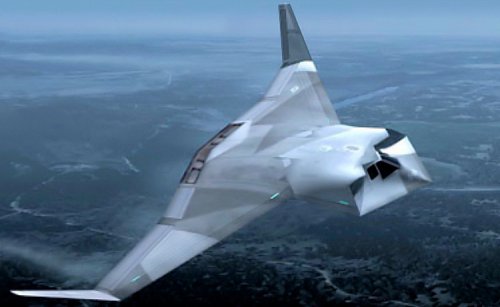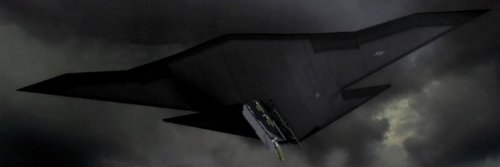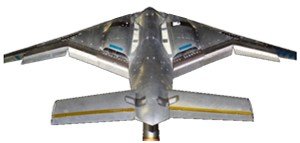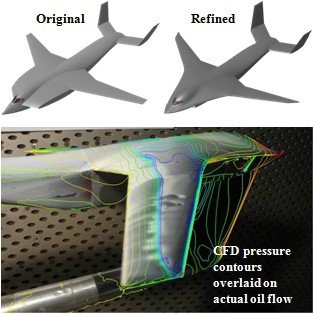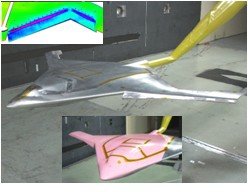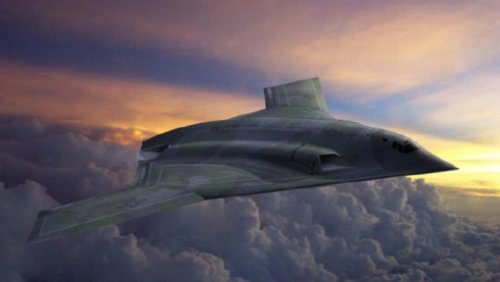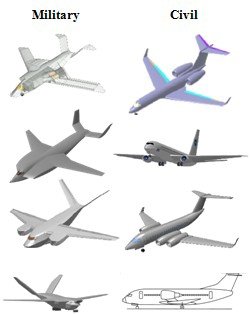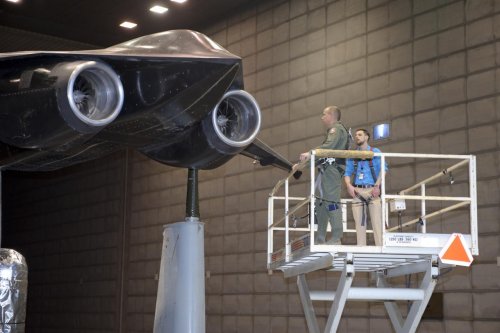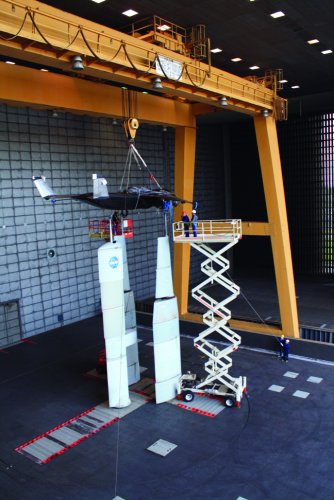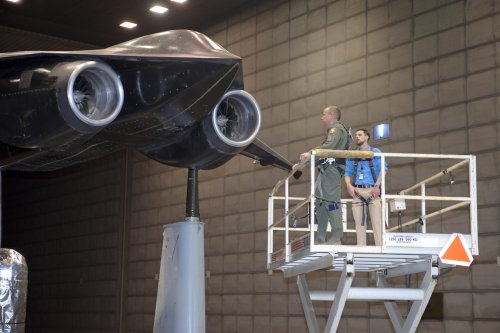http://www.arnold.af.mil/news/story.asp?id=123268882
AFRL tests Speed Agile transport vehicle concept at NFAC
Posted 8/19/2011 Updated 8/19/2011
by Philip Lorenz III
AEDC/PA
8/19/2011 - ARNOLD AIR FORCE BASE, Tenn. -- Air Force Research Laboratory (AFRL) researchers have embarked upon a critical set of experiments designed to test a new Short Take Off and Landing (STOL) transport vehicle concept.
During this set of experiments, a 23-percent scale model is being tested in the Arnold Engineering and Development Center's (AEDC) National Full Scale Aerodynamics Complex (NFAC), the world's largest wind tunnel. This testing will validate the low speed aerodynamic performance of the hybrid powered lift system. Powered testing at this scale with Williams FJ-44 engines achieves realistic conditions and allows researchers to obtain crucial data on lateral directional stability, ground effects, aircraft performance, engine performance, and engine operability.
Data gathered from the testing will be analyzed to determine the technology's applicability toward future vehicles. This technology could potentially benefit transport aircraft in both the civil and military realms. Air Force applications could include future transport aircraft operated by Air Mobility Command and the Air Force Special Operations Command.
The Speed Agile Concept Demonstrator (SACD) concept is a four-engine, multi-mission aircraft that offers speed agility; operates routinely from short, improvised airfields; carries larger and heavier payloads; and employs precise and simple flight controls.
The SACD's high-efficiency STOL design incorporates a hybrid-powered lift system. This lift system features a simplified mechanical design and low-drag integration. Together, these features greatly reduce both the vehicle weight and overall drag on the vehicle, resulting in greater efficiency and payload capacity than conventional powered lift systems.
An aircraft employing Speed Agile technology could potentially operate from short, unprepared airfields. These benefits, coupled with the overall vehicle efficiency, could result in an extremely versatile aircraft capable of quickly and safely transporting equipment, supplies, and troops to remote areas.
Future plans for this technology development may include a large-scale demonstration to validate performance at representative vehicle scale and payloads.
The Speed Agile program is a combined effort of AFRL and Lockheed Martin Corporation, with testing facilities provided by AEDC and NASA, and models and associated equipment supplied by Advanced Technologies Incorporated and Williams International.
PHOTO:Caption for 110715-F-UU070-014: From left, AFMC commander Gen. Donald Hoffman and AEDC’s National Full-scale Aerodynamic Complex (NFAC) Test Director Patrick Goulding II get a close look at a 23-percent scale model of the Speed Agile technology demonstrator that recently underwent aerodynamic testing in the world’s largest wind tunnel at NFAC in Mountain View, Calif. (Photo provided)
-----------------------------------------------
Air Vehicles News and Accomplishments
July 2011
AFRL to test new Speed Agile transport vehicle concept
AFRL researchers are embarking upon a critical set of experiments designed to test a new Short Take Off and Landing (STOL) transport vehicle concept.
The Speed Agile Concept Demonstrator (SACD) concept is a four-engine, multi-mission aircraft that offers speed agility; operates routinely from short, improvised airfields; carries larger and heavier payloads; and employs precise and simple flight controls.
The SACD’s high-efficiency STOL design incorporates a hybrid powered lift system. This lift system features a simplified mechanical design and low-drag integration. Together, these features greatly reduce both the vehicle weight and overall drag on the vehicle, resulting in greater efficiency and payload capacity than conventional powered lift systems.
An aircraft employing Speed Agile technology could potentially operate from short, unprepared airfields. These benefits, coupled with the overall vehicle efficiency, could result in an extremely versatile aircraft capable of quickly and safely transporting equipment, supplies, and troops to remote areas.
During this set of experiments, a 23 percent scale model vehicle is being tested in the Arnold Engineering and Development Center’s (AEDC) National Full Scale Aerodynamics Complex (NFAC), the world’s largest wind tunnel. This testing will validate the low speed aerodynamic performance of the hybrid powered lift system. Powered testing at this scale with Williams FJ-44 engines achieves realistic conditions and allows researchers to obtain crucial data on lateral directional stability, ground effects, aircraft performance, engine performance, and engine operability.
Data gathered from the testing will be analyzed to determine the technology’s applicability toward future vehicles. This technology could potentially benefit transport aircraft in both the civil and military realms. Air Force applications could include future transport aircraft operated by Air Mobility Command and the Air Force Special Operations Command.
Future plans for this technology development may include a large-scale demonstration to validate performance at representative vehicle scale and payloads.
The Speed Agile program is a combined effort of AFRL and Lockheed Martin Corporation, with testing facilities provided by AEDC and NASA, and models and associated equipment supplied by Advanced Technologies Incorporated and Williams International.
(88ABW-2011-3604)
PHOTO:A 23 percent scale model Speed Agile vehicle is prepared for upcoming tests in the Arnold Engineering and Development Center’s (AEDC) National Full Scale Aerodynamics Complex (NFAC), the world’s largest wind tunnel. (AEDC/NFAC)
https://newafpims.afnews.af.mil/shared/media/document/AFD-110804-011.pdf

